Science
-
 Prof. Song Develops Nano-Structure to Enhance Power of Rechargeable Lithium-ion Battery
A team of scientists led by Prof. Hyun-Joon Song of the Department of Chemistry, KAIST, developed a nano-structure that could increase the power of rechargeable lithium-ion batteries, university sources said on Monday (Feb. 16).
The research team found that a nano-structured material using copper oxide (CuO) could produce lithium-ion batteries with some 50 percent more capacity than conventional products. The study was published in the online edition of peer-review journal Advanced Materials.
In rechargeable lithium-ion batteries, lithium ions move between the battery"s anode and cathode. The high-energy density of the batteries led to their common use in consumer electronics products, expecially portable devices. Their demand in automotive and aerospace applications is growing, and nano-structured, or nano-enabled batteries are emerging as the new generation of lithium-ion batteries for their edge in recharging time, capacity and battery life.
Graphite has been a popular material for cathodes in lithium-ion batteries. However, graphite cathodes are also blamed for lost capacity due to their consumption of lithium ions, which are linked to shorter battery life.
As such, scientists have been looking for materials that could replace graphite in cathodes, and silicon and metal oxide have been studied as possible alternatives.
2009.02.17 View 13492
Prof. Song Develops Nano-Structure to Enhance Power of Rechargeable Lithium-ion Battery
A team of scientists led by Prof. Hyun-Joon Song of the Department of Chemistry, KAIST, developed a nano-structure that could increase the power of rechargeable lithium-ion batteries, university sources said on Monday (Feb. 16).
The research team found that a nano-structured material using copper oxide (CuO) could produce lithium-ion batteries with some 50 percent more capacity than conventional products. The study was published in the online edition of peer-review journal Advanced Materials.
In rechargeable lithium-ion batteries, lithium ions move between the battery"s anode and cathode. The high-energy density of the batteries led to their common use in consumer electronics products, expecially portable devices. Their demand in automotive and aerospace applications is growing, and nano-structured, or nano-enabled batteries are emerging as the new generation of lithium-ion batteries for their edge in recharging time, capacity and battery life.
Graphite has been a popular material for cathodes in lithium-ion batteries. However, graphite cathodes are also blamed for lost capacity due to their consumption of lithium ions, which are linked to shorter battery life.
As such, scientists have been looking for materials that could replace graphite in cathodes, and silicon and metal oxide have been studied as possible alternatives.
2009.02.17 View 13492 -
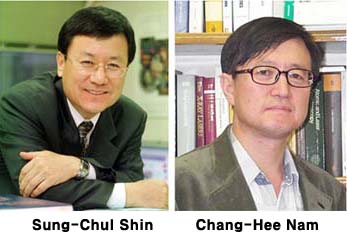 Two KAIST Professors Elected Fellows of APS
Profs. Sung-Chul Shin and Chang-Hee Nam of the Department of Physics, KAIST, have recently been elected the 2009 fellows of the American Physical Society (APS), university officials said on Tuesday (Dec. 2).
The APS fellowship is a prestigious recognition of the two professors" outstanding academic achievements in the field of physics, the officials said. The selection criteria are known to be extremely stringent and only a small fraction of APS members become fellows.
Prof. Shin was cited for his pioneering contributions to the understanding of magnetization reversal dynamics, in particular critical scaling behavior of Barkhausen avalanches of 2D ferromagnets, and discovery of novel magnetic thin films and multilayers for high-density data storage.
Prof. Nam was recognized for his contributions to the theory and experiments of physical processes of high harmonic generation for the development of attosecond coherent x-ray sources and related femtosecond laser technology.
The American Physical Society, founded in 1899, is the world"s second largest organization of physicists, behind the Deutsche Physikalische Gesellschaft. It has 46,000 members across the world.
2008.12.04 View 16625
Two KAIST Professors Elected Fellows of APS
Profs. Sung-Chul Shin and Chang-Hee Nam of the Department of Physics, KAIST, have recently been elected the 2009 fellows of the American Physical Society (APS), university officials said on Tuesday (Dec. 2).
The APS fellowship is a prestigious recognition of the two professors" outstanding academic achievements in the field of physics, the officials said. The selection criteria are known to be extremely stringent and only a small fraction of APS members become fellows.
Prof. Shin was cited for his pioneering contributions to the understanding of magnetization reversal dynamics, in particular critical scaling behavior of Barkhausen avalanches of 2D ferromagnets, and discovery of novel magnetic thin films and multilayers for high-density data storage.
Prof. Nam was recognized for his contributions to the theory and experiments of physical processes of high harmonic generation for the development of attosecond coherent x-ray sources and related femtosecond laser technology.
The American Physical Society, founded in 1899, is the world"s second largest organization of physicists, behind the Deutsche Physikalische Gesellschaft. It has 46,000 members across the world.
2008.12.04 View 16625 -
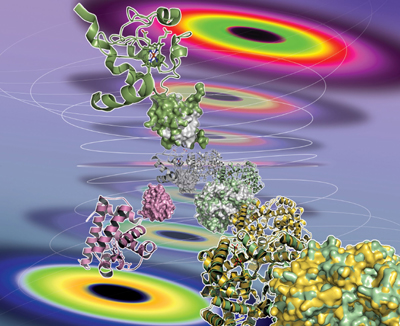 KAIST Professor Exposes Structural Dynamics of Protein in Solution
-- Dr. Hyot-Cherl Ihee"s 3-Year Research Is Valuable in Pharmaceutical Application
Prof. Hyot-Cherl Ihee and his team at the Department of Chemistry, KAIST, has successfully unveiled the structural dynamics of protein in solution as a result of more than three years" research work.
Nature Methods, a sister publication of the authoritative science magazine Nature, published the treatise, titled "Tracking the structural dynamics of proteins in solution using time-resolved wide-angle X-ray scattering" in its Sept. 22 online edition. The research paper will be carried in the magazine"s printed version in its October edition, according to Dr. Lee who is its correspondence author.
In May 2005, Prof. Ihee successfully photographed the structural dynamics of protein in solid state and his findings were published in the Proceedings of National Academy of Science of the United States. As protein normally exists in human body in solution, not in solid state, he directed his research to developing the technology to capture protein"s dynamics in resolved state.
In July that year, Prof. Ihee succeeded in measuring the structural changes of simple organic molecules in real time. He further developed the technology to uncover the structural dynamics of hemoglobin, myoglobin and cytochrome C.
Prof. Ihee"s research, helped with the Education-Science-Technology Ministry"s Creative Research Promotion Fund, can be applied to new pharmaceutical development projects as well as nanotechnology development, according to KAIST officials.
Prof. Ihee who earned his doctorate at California Institute of Technology in 1994 began teaching at KAIST in 2003. He won the Young Scientist Award given by the Korean government in 2006.
2008.09.22 View 15651
KAIST Professor Exposes Structural Dynamics of Protein in Solution
-- Dr. Hyot-Cherl Ihee"s 3-Year Research Is Valuable in Pharmaceutical Application
Prof. Hyot-Cherl Ihee and his team at the Department of Chemistry, KAIST, has successfully unveiled the structural dynamics of protein in solution as a result of more than three years" research work.
Nature Methods, a sister publication of the authoritative science magazine Nature, published the treatise, titled "Tracking the structural dynamics of proteins in solution using time-resolved wide-angle X-ray scattering" in its Sept. 22 online edition. The research paper will be carried in the magazine"s printed version in its October edition, according to Dr. Lee who is its correspondence author.
In May 2005, Prof. Ihee successfully photographed the structural dynamics of protein in solid state and his findings were published in the Proceedings of National Academy of Science of the United States. As protein normally exists in human body in solution, not in solid state, he directed his research to developing the technology to capture protein"s dynamics in resolved state.
In July that year, Prof. Ihee succeeded in measuring the structural changes of simple organic molecules in real time. He further developed the technology to uncover the structural dynamics of hemoglobin, myoglobin and cytochrome C.
Prof. Ihee"s research, helped with the Education-Science-Technology Ministry"s Creative Research Promotion Fund, can be applied to new pharmaceutical development projects as well as nanotechnology development, according to KAIST officials.
Prof. Ihee who earned his doctorate at California Institute of Technology in 1994 began teaching at KAIST in 2003. He won the Young Scientist Award given by the Korean government in 2006.
2008.09.22 View 15651 -
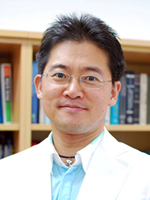 KAIST Professor Finds Paradox in Human Behaviors on Road
-Strange as it might seem, closing roads can cut delays
A new route opened to ease traffic jam, but commuting time has not been reduced.Conversely, motorists reached their destinations in shorter times after a big street was closed. These paradoxical phenomena are the result of human selfishness, according to recent findings of a research team led by a KAIST physics professor.
Prof. Ha-Woong Jeong, 40, at the Department of Physics, conducted a joint research with a team from Santa Fe Institute of the U.S. to analyze the behaviors of drivers in Boston, New York and London. Their study found that when individual drivers, fed with traffic information via various kinds of media, try to choose the quickest route, it can cause delays for others and even worsen congestion.
Prof. Jeong and his group"s study will be published in the Sept. 18 edition of the authoritative Physical Review Letters. The London-based Economist magazine introduced Prof. Jeong"s finding in its latest edition.
Prof. Jeong, a pioneer in the study of "complex system," has published more than 70 research papers in the world"s leading science journals, including Nature, PNAS and Physical Review Letters. "Initially, my study was to reduce annoyance from traffic jam during rush hours," Prof. Jeong said. "Ultimately, it is purposed to eliminate inefficiency located in various corners of social activities, with the help of the network science."
The Economist article read (in part):
"...when individual drivers each try to choose the quickest route it can cause delays for others and even increase hold-ups in the entire road network.
"The physicists give a simplified example of how this can happen: trying to reach a destination either by using a short but narrow bridge or a longer but wide motorway. In their hypothetical case, the combined travel time of all the drivers is minimized if half use the bridge and half the motorway. But that is not what happens. Some drivers will switch to the bridge to shorten their commute, but as the traffic builds up there the motorway starts to look like a better bet, so some switch back. Eventually the traffic flow on the two routes settles into what game theory calls a Nash equilibrium, named after John Nash, the mathematician who described it. This is the point where no individual driver could arrive any faster by switching routes.
"The researchers looked at how this equilibrium could arise if travelling across Boston from Harvard Square to Boston Common. They analysed 246 different links in the road network that could be used for the journey and calculated traffic flows at different volumes to produce what they call a “price of anarchy” (POA). This is the ratio of the total cost of the Nash equilibrium to the total cost of an optimal traffic flow directed by an omniscient traffic controller. In Boston they found that at high traffic levels drivers face a POA which results in journey times 30% longer than if motorists were co-ordinated into an optimal traffic flow. Much the same thing was found in London (a POA of up to 24% for journeys between Borough and Farringdon Underground stations) and New York (a POA of up to 28% from Washington Market Park to Queens Midtown Tunnel).
"Modifying the road network could reduce delays. And contrary to popular belief, a simple way to do that might be to close certain roads. This is known as Braess’s paradox, after another mathematician, Dietrich Braess, who found that adding extra capacity to a network can sometimes reduce its overall efficiency.
"In Boston the group looked to see if the paradox could be created by closing any of the 246 links. In 240 cases their analysis showed that a closure increased traffic problems. But closing any one of the remaining six streets reduced the POA of the new Nash equilibrium. Much the same thing was found in London and New York. More work needs to be done to understand these effects, say the researchers. But even so, planners should note that there is now evidence that even a well intentioned new road may make traffic jams worse."
2008.09.18 View 16209
KAIST Professor Finds Paradox in Human Behaviors on Road
-Strange as it might seem, closing roads can cut delays
A new route opened to ease traffic jam, but commuting time has not been reduced.Conversely, motorists reached their destinations in shorter times after a big street was closed. These paradoxical phenomena are the result of human selfishness, according to recent findings of a research team led by a KAIST physics professor.
Prof. Ha-Woong Jeong, 40, at the Department of Physics, conducted a joint research with a team from Santa Fe Institute of the U.S. to analyze the behaviors of drivers in Boston, New York and London. Their study found that when individual drivers, fed with traffic information via various kinds of media, try to choose the quickest route, it can cause delays for others and even worsen congestion.
Prof. Jeong and his group"s study will be published in the Sept. 18 edition of the authoritative Physical Review Letters. The London-based Economist magazine introduced Prof. Jeong"s finding in its latest edition.
Prof. Jeong, a pioneer in the study of "complex system," has published more than 70 research papers in the world"s leading science journals, including Nature, PNAS and Physical Review Letters. "Initially, my study was to reduce annoyance from traffic jam during rush hours," Prof. Jeong said. "Ultimately, it is purposed to eliminate inefficiency located in various corners of social activities, with the help of the network science."
The Economist article read (in part):
"...when individual drivers each try to choose the quickest route it can cause delays for others and even increase hold-ups in the entire road network.
"The physicists give a simplified example of how this can happen: trying to reach a destination either by using a short but narrow bridge or a longer but wide motorway. In their hypothetical case, the combined travel time of all the drivers is minimized if half use the bridge and half the motorway. But that is not what happens. Some drivers will switch to the bridge to shorten their commute, but as the traffic builds up there the motorway starts to look like a better bet, so some switch back. Eventually the traffic flow on the two routes settles into what game theory calls a Nash equilibrium, named after John Nash, the mathematician who described it. This is the point where no individual driver could arrive any faster by switching routes.
"The researchers looked at how this equilibrium could arise if travelling across Boston from Harvard Square to Boston Common. They analysed 246 different links in the road network that could be used for the journey and calculated traffic flows at different volumes to produce what they call a “price of anarchy” (POA). This is the ratio of the total cost of the Nash equilibrium to the total cost of an optimal traffic flow directed by an omniscient traffic controller. In Boston they found that at high traffic levels drivers face a POA which results in journey times 30% longer than if motorists were co-ordinated into an optimal traffic flow. Much the same thing was found in London (a POA of up to 24% for journeys between Borough and Farringdon Underground stations) and New York (a POA of up to 28% from Washington Market Park to Queens Midtown Tunnel).
"Modifying the road network could reduce delays. And contrary to popular belief, a simple way to do that might be to close certain roads. This is known as Braess’s paradox, after another mathematician, Dietrich Braess, who found that adding extra capacity to a network can sometimes reduce its overall efficiency.
"In Boston the group looked to see if the paradox could be created by closing any of the 246 links. In 240 cases their analysis showed that a closure increased traffic problems. But closing any one of the remaining six streets reduced the POA of the new Nash equilibrium. Much the same thing was found in London and New York. More work needs to be done to understand these effects, say the researchers. But even so, planners should note that there is now evidence that even a well intentioned new road may make traffic jams worse."
2008.09.18 View 16209 -
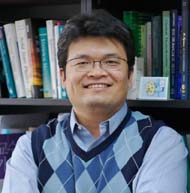 Prof. Kim Receives Lee Osheroff Prize
Professor Eun-Seong Kim of the Department of Physics has been selected as the winner of the Lee Osheroff Richardson Prize for 2008.
The award was established in honor of the 1996 Nobel Prize laureates in Physics David Lee, Douglas Osheroff, and Robert Richardson for their discovery in superfluidity in helium-3. The annual prize sponsored by Oxford Instruments NanoScience is awarded to a young scientist who has made a notable achievement in the field of low temperatures and high magnetic fields.
Kim was chosen as the winner of this prestigious award for his contributions to the understanding of solid helium. Through research, Professor Kim found superfluid-like behavior in solid helium and with this discovery it is shown that all three states of matter can exhibit superfluid behavior.
The Lee Osheroff Richardson Prize recipient is selected by the North American Prize Committee which is composed of prominent figures in the low temperature and high magnetic fields including Professor Bruce Gaulin of McMaster University, who chairs the Prize Committee. The award ceremony was held on March 11 in New Orleans.
2008.03.18 View 15583
Prof. Kim Receives Lee Osheroff Prize
Professor Eun-Seong Kim of the Department of Physics has been selected as the winner of the Lee Osheroff Richardson Prize for 2008.
The award was established in honor of the 1996 Nobel Prize laureates in Physics David Lee, Douglas Osheroff, and Robert Richardson for their discovery in superfluidity in helium-3. The annual prize sponsored by Oxford Instruments NanoScience is awarded to a young scientist who has made a notable achievement in the field of low temperatures and high magnetic fields.
Kim was chosen as the winner of this prestigious award for his contributions to the understanding of solid helium. Through research, Professor Kim found superfluid-like behavior in solid helium and with this discovery it is shown that all three states of matter can exhibit superfluid behavior.
The Lee Osheroff Richardson Prize recipient is selected by the North American Prize Committee which is composed of prominent figures in the low temperature and high magnetic fields including Professor Bruce Gaulin of McMaster University, who chairs the Prize Committee. The award ceremony was held on March 11 in New Orleans.
2008.03.18 View 15583 -
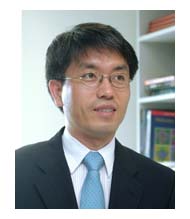 Prof. Chung Named Winner of 2008 KAIST Scientific Award
Professor Chung Jong-Kyeong of the Department of Biological Sciences was named the winner of the 2008 KAIST Scientific Award.
The prize was awarded by KAIST President Suh Nam-Pyo during the 37th KAIST anniversary ceremony on Feb. 16.
Chung was cited for disclosing the new anti-cancer aspect of adenosine monophosphate-activated protein kinase (AMPK). His papers, published in the science magazine Nature in 2006 and again in 2007, revealed that the protein could be used to treat certain forms of cancer, as well as prevent malignant growths.
2008.02.28 View 14901
Prof. Chung Named Winner of 2008 KAIST Scientific Award
Professor Chung Jong-Kyeong of the Department of Biological Sciences was named the winner of the 2008 KAIST Scientific Award.
The prize was awarded by KAIST President Suh Nam-Pyo during the 37th KAIST anniversary ceremony on Feb. 16.
Chung was cited for disclosing the new anti-cancer aspect of adenosine monophosphate-activated protein kinase (AMPK). His papers, published in the science magazine Nature in 2006 and again in 2007, revealed that the protein could be used to treat certain forms of cancer, as well as prevent malignant growths.
2008.02.28 View 14901 -
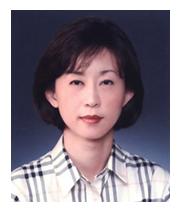 Prof. Lee Listed on Marquis Who's Who
Professor Lee Ji-hyun of the Graduate School of Culture Technology at KAIST was registered to Marquis Who"s Who, known as one of the world"s three leading biographical dictionaries.
Prof. Lee"s biography was published in the 25th anniversary edition of "Marquis Who"s Who in the World 2008."
Lee"s research interests are the color and culture, computer-supported collaborative design, creative design, evolutionary systems in design, formal models of design process, representation and reasoning in design and visualization for design information.
Lee has published about 30 papers in science journals and for scholastic conferences. She is also a participating professor at KAIST Institute for Entertainment Engineering. Before joining KAIST in 2007, she was an assistant professor at the Department of Digital Media Design and Graduate School of Computational Design, the National Yunlin University of Science & Technology (NYUST) in Taiwan starting from 2002.
She received her Ph.D. from the School of Architecture (Computational Design) at Carnegie Mellon University in 2002. She graduated from the Department of Housing & Interior Design at Yonsei University in Seoul in 1991 and received her M.S. from the same university in 1993.
2008.02.14 View 18589
Prof. Lee Listed on Marquis Who's Who
Professor Lee Ji-hyun of the Graduate School of Culture Technology at KAIST was registered to Marquis Who"s Who, known as one of the world"s three leading biographical dictionaries.
Prof. Lee"s biography was published in the 25th anniversary edition of "Marquis Who"s Who in the World 2008."
Lee"s research interests are the color and culture, computer-supported collaborative design, creative design, evolutionary systems in design, formal models of design process, representation and reasoning in design and visualization for design information.
Lee has published about 30 papers in science journals and for scholastic conferences. She is also a participating professor at KAIST Institute for Entertainment Engineering. Before joining KAIST in 2007, she was an assistant professor at the Department of Digital Media Design and Graduate School of Computational Design, the National Yunlin University of Science & Technology (NYUST) in Taiwan starting from 2002.
She received her Ph.D. from the School of Architecture (Computational Design) at Carnegie Mellon University in 2002. She graduated from the Department of Housing & Interior Design at Yonsei University in Seoul in 1991 and received her M.S. from the same university in 1993.
2008.02.14 View 18589 -
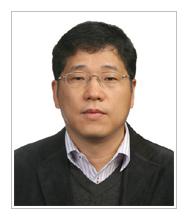 Professor Jie-Oh Lee of the Department of Chemistry of KAIST
Professor Jie-Oh Lee of the Department of Chemistry of KAIST was selected as the "KAIST Man of the Year."
Lee was cited for his successful identifying of the three-dimensional structure of protein that causes sepsis. His research is expected to contribute greatly to the development of medicines for immune system treatment.
The prize was given by KAIST President Suh Nam Pyo at the New Year"s ceremony on Jan. 2, 2008 at the KAIST auditorium.
Professor Lee published a series of research papers in Science, one of the world"s most prestigious scientific journals. Most recently, Lee was awarded the "Scientist of the Year" prize by the Korean Science Reporters Association.
2008.01.02 View 16044
Professor Jie-Oh Lee of the Department of Chemistry of KAIST
Professor Jie-Oh Lee of the Department of Chemistry of KAIST was selected as the "KAIST Man of the Year."
Lee was cited for his successful identifying of the three-dimensional structure of protein that causes sepsis. His research is expected to contribute greatly to the development of medicines for immune system treatment.
The prize was given by KAIST President Suh Nam Pyo at the New Year"s ceremony on Jan. 2, 2008 at the KAIST auditorium.
Professor Lee published a series of research papers in Science, one of the world"s most prestigious scientific journals. Most recently, Lee was awarded the "Scientist of the Year" prize by the Korean Science Reporters Association.
2008.01.02 View 16044 -
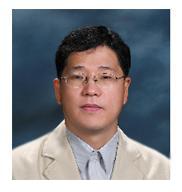 Professor Jie-Oh Lee awarded 'Scientist of the Year'
Professor Jie-Oh Lee of the Department of Chemistry was awarded the ‘Scientist of the Year’ prize for identifying the three-dimensional structure of protein that causes sepsis, and it was announced by the Korean Science Reporters Association (KOSRA) on November 26th.“Humans have about 30,000 different kinds of proteins, and they all have different structures, just like our faces,” said Professor Lee. “It is extremely helpful to know the three-dimensional shape of proteins when you are trying to understand what their functions in an organism are and trying to develop medicine for them.”
When looking for the three-dimensional structure, protein must first be crystallized and radiated with x-ray, so that reflected x-ray can be interpreted. The three-dimensional structure of sepsis immunity proteins TLR1-TLR2 and TLR4-MD2 could not be found until now because they would not even crystallize.
“I began to doubt if it was even possible to crystallize them because we went through so many failures,” reflected Professor Lee.
In August of last year, after about three years of research, the team finally came up with a new idea. The team decided to ‘stick’ the sepsis immunity protein to protein that easily crystallizes. If the combined structure of sepsis immunity protein and the known protein could be identified, the structure of sepsis immunity protein would be a combined structure subtracted by the known structure.
The three-dimensional structure was obtained with x-ray radiation from combined protein crystal. The combined protein was derived from an insect cell with altered DNA.
“This method seems very simple but no one ever tried it or no one ever succeeded in it,” said Professor Lee.
The result was a horseshoe shaped protein structure. The research team also expects the new protein-combining technology to contribute to the development of a new immune system treatment medicine.
The prize-awarding ceremony was held on November 26th in an event hosted by the Korean Hospital Association.
Also, Professor Ryong Ryoo of the Department of Chemistry was selected as the National Scientist last month.By KAIST Herald on November, 2007
2007.12.21 View 15318
Professor Jie-Oh Lee awarded 'Scientist of the Year'
Professor Jie-Oh Lee of the Department of Chemistry was awarded the ‘Scientist of the Year’ prize for identifying the three-dimensional structure of protein that causes sepsis, and it was announced by the Korean Science Reporters Association (KOSRA) on November 26th.“Humans have about 30,000 different kinds of proteins, and they all have different structures, just like our faces,” said Professor Lee. “It is extremely helpful to know the three-dimensional shape of proteins when you are trying to understand what their functions in an organism are and trying to develop medicine for them.”
When looking for the three-dimensional structure, protein must first be crystallized and radiated with x-ray, so that reflected x-ray can be interpreted. The three-dimensional structure of sepsis immunity proteins TLR1-TLR2 and TLR4-MD2 could not be found until now because they would not even crystallize.
“I began to doubt if it was even possible to crystallize them because we went through so many failures,” reflected Professor Lee.
In August of last year, after about three years of research, the team finally came up with a new idea. The team decided to ‘stick’ the sepsis immunity protein to protein that easily crystallizes. If the combined structure of sepsis immunity protein and the known protein could be identified, the structure of sepsis immunity protein would be a combined structure subtracted by the known structure.
The three-dimensional structure was obtained with x-ray radiation from combined protein crystal. The combined protein was derived from an insect cell with altered DNA.
“This method seems very simple but no one ever tried it or no one ever succeeded in it,” said Professor Lee.
The result was a horseshoe shaped protein structure. The research team also expects the new protein-combining technology to contribute to the development of a new immune system treatment medicine.
The prize-awarding ceremony was held on November 26th in an event hosted by the Korean Hospital Association.
Also, Professor Ryong Ryoo of the Department of Chemistry was selected as the National Scientist last month.By KAIST Herald on November, 2007
2007.12.21 View 15318 -
 Three Professors Selected as IEEE Fellows
Three Korea Advanced Institute of Science and Technology (KAIST)’s professors, Ju-Jang Lee, Yong-Hee Lee, and Hoi-Jun Yoo, were selected as a part of the 2008 Institute of Electrical and Electronics Engineers, Inc (IEEE)’s “Fellows.” A Fellow is the highest level of membership given only to those “with an extraordinary record of accomplishments” in their field of study. Although some IEEE memberships can be gained freely by all, the Fellow status is bestowed only by the IEEE Board of Directors.
Professor Ju-Jang Lee was awarded the Fellow status “for contributions to intelligent robust control and robotics.” Robust control is a system’s stable maintenance under many inputs in a dynamic environment. A part of KAIST’s Electrical Engineering Department, Professor Ju-Jang Lee has conducted successful research in these fields, and has published 538 papers. He also holds many patents in and outside of the country, and is the General Chair for two upcoming IEEE conferences in 2008 and 2009.
Professor Yong-Hee Lee of KAIST’s Physics Department was recognized for his “contributions to photonic devices based upon vertical cavity surface emitting lasers and photonic crystals.” Photonic devices are those that allow the practical use of photons, and photon crystals are structures that affect the motion of photons. Professor Yong-Hee Lee is an expert in the field of Photonics and his works have been cited over 2500 times. He is also an outstanding speaker, giving over 30 lectures in front of international audiences in the past 5 years, and receiving The Distinguished Lecturer’s Award from IEEE.
Professor Hoi-Jun Yoo was granted the prestigious Fellow status for his “contributions to low-power and high-speed VLSI design.” VLSI stands for ‘very large scale integration’ and refers to the skill for packing a huge number of semiconductors on an integrated circuit. Professor Lee’s Fellow status is noteworthy in that he studied, worked, and researched solely in Korea. He is also the youngest of the three KAIST professors to be granted membership in the class of 2008 Fellowship. IEEE also recognized Professor Yoo as the most frequent publisher during the past 8 years.
IEEE, originally concentrating on Electric Engineering, has now branched into many related fields. It is a nonprofit organization, and its aim is to be the world"s leading professional association for the advancement of technology. For its Fellow Class of 2008, 295 members were chosen; which is less that 0.1% of their total members.By KAIST Herald on December, 2007
2007.12.21 View 21999
Three Professors Selected as IEEE Fellows
Three Korea Advanced Institute of Science and Technology (KAIST)’s professors, Ju-Jang Lee, Yong-Hee Lee, and Hoi-Jun Yoo, were selected as a part of the 2008 Institute of Electrical and Electronics Engineers, Inc (IEEE)’s “Fellows.” A Fellow is the highest level of membership given only to those “with an extraordinary record of accomplishments” in their field of study. Although some IEEE memberships can be gained freely by all, the Fellow status is bestowed only by the IEEE Board of Directors.
Professor Ju-Jang Lee was awarded the Fellow status “for contributions to intelligent robust control and robotics.” Robust control is a system’s stable maintenance under many inputs in a dynamic environment. A part of KAIST’s Electrical Engineering Department, Professor Ju-Jang Lee has conducted successful research in these fields, and has published 538 papers. He also holds many patents in and outside of the country, and is the General Chair for two upcoming IEEE conferences in 2008 and 2009.
Professor Yong-Hee Lee of KAIST’s Physics Department was recognized for his “contributions to photonic devices based upon vertical cavity surface emitting lasers and photonic crystals.” Photonic devices are those that allow the practical use of photons, and photon crystals are structures that affect the motion of photons. Professor Yong-Hee Lee is an expert in the field of Photonics and his works have been cited over 2500 times. He is also an outstanding speaker, giving over 30 lectures in front of international audiences in the past 5 years, and receiving The Distinguished Lecturer’s Award from IEEE.
Professor Hoi-Jun Yoo was granted the prestigious Fellow status for his “contributions to low-power and high-speed VLSI design.” VLSI stands for ‘very large scale integration’ and refers to the skill for packing a huge number of semiconductors on an integrated circuit. Professor Lee’s Fellow status is noteworthy in that he studied, worked, and researched solely in Korea. He is also the youngest of the three KAIST professors to be granted membership in the class of 2008 Fellowship. IEEE also recognized Professor Yoo as the most frequent publisher during the past 8 years.
IEEE, originally concentrating on Electric Engineering, has now branched into many related fields. It is a nonprofit organization, and its aim is to be the world"s leading professional association for the advancement of technology. For its Fellow Class of 2008, 295 members were chosen; which is less that 0.1% of their total members.By KAIST Herald on December, 2007
2007.12.21 View 21999 -
 KAIST Names Three Distinguished Professors
KAIST Names Three Distinguished Professors
- Three professors having achieved world’s distinguished research and education performances- Special incentives and non full-time position after retirement age to be offered
KAIST (President Nam-Pyo Suh) has named three Distinguished Professors, the most honorable positions in KAIST, for the first time in its history.
The three professors are Choong-Ki Kim, Dep. of Computer Science, Sang-Yup Lee, Dep. of Chemical and Biomolecular Engineering, and Kee-Joo Chang, Dep. of Physics.
Professor Kim has made significant contributions to the advancement of Korea’s semiconductor field. He developed and put into a practical use ‘CCD Imaging Element’, a core technology in the multimedia era and the most widely used imaging sensor, for the first time in the world. He also promoted special education programs with industrial bodies such as Samsung Electronics, Hynix Semiconductor, etc. to improve industry-academy cooperation programs of KAIST. In recent years, he is showing passionate activities for the development of KAIST, such as genius education, interdisciplinary education by the Graduate School of Culture Technology, and experiment education for undergraduate students. He received Hoam Prize in 1993 and the Order of Civil Merit Moran Medal in 1997, and is an IEEE fellow and the former Vice-president of KAIST.
Professor Lee has showed outstanding performances in the field of Metabolic Engineering. He discovered the genome sequences of bacteria for the first time in the world and published a paper regarding his discovery applied to metabolic engineering technologies at Nature Biotechnology in 2004. He also published a 78-page paper, evaluated as the bible of prteomics, at the 70 years long Microbiology and Molecular Biology Review (MMBR). His research performances are 187 domestic and international papers, 203 patent applications, Young Scientist Award, 212 invited lectures from home and abroad, etc.
Professor Chang has published about 200 papers in the field of Sold-State Physics and presented diverse theory models regarding semiconductor materials, his major research fields, at review articles, textbooks, academic conferences, etc. Particularly, he found out the essences of DX defects in GaAs semiconductors, a problem that had remained unsolved more than 10 years, and his paper on this has been cited so far more than 500 times. Professor Chang, named as one of the Nation’s Great Scholars in 2005, has 15 papers as cited more than 100 times and records the number of citation indexed by SCI at 4,847, third place among all scientists in Korea.
Distinguished Professors are the most honorable positions in KAIST, and only professors achieving world’s distinguished research and education performances can be Distinguished Professors. Being Distinguished Professors demands recommendations from President, Vice-president, Deans of College, and Department Heads and favorable evaluations by domestic and overseas professionals. Distinguished Professors will be offered special incentives and appointed as non full-time faculty even after their full retirement age.
KAIST will hire outstanding human resources in highly promising research fields through its novice systems including Distinguished Professors System, etc. to build and retain world’s best faculty.
2007.03.19 View 17633
KAIST Names Three Distinguished Professors
KAIST Names Three Distinguished Professors
- Three professors having achieved world’s distinguished research and education performances- Special incentives and non full-time position after retirement age to be offered
KAIST (President Nam-Pyo Suh) has named three Distinguished Professors, the most honorable positions in KAIST, for the first time in its history.
The three professors are Choong-Ki Kim, Dep. of Computer Science, Sang-Yup Lee, Dep. of Chemical and Biomolecular Engineering, and Kee-Joo Chang, Dep. of Physics.
Professor Kim has made significant contributions to the advancement of Korea’s semiconductor field. He developed and put into a practical use ‘CCD Imaging Element’, a core technology in the multimedia era and the most widely used imaging sensor, for the first time in the world. He also promoted special education programs with industrial bodies such as Samsung Electronics, Hynix Semiconductor, etc. to improve industry-academy cooperation programs of KAIST. In recent years, he is showing passionate activities for the development of KAIST, such as genius education, interdisciplinary education by the Graduate School of Culture Technology, and experiment education for undergraduate students. He received Hoam Prize in 1993 and the Order of Civil Merit Moran Medal in 1997, and is an IEEE fellow and the former Vice-president of KAIST.
Professor Lee has showed outstanding performances in the field of Metabolic Engineering. He discovered the genome sequences of bacteria for the first time in the world and published a paper regarding his discovery applied to metabolic engineering technologies at Nature Biotechnology in 2004. He also published a 78-page paper, evaluated as the bible of prteomics, at the 70 years long Microbiology and Molecular Biology Review (MMBR). His research performances are 187 domestic and international papers, 203 patent applications, Young Scientist Award, 212 invited lectures from home and abroad, etc.
Professor Chang has published about 200 papers in the field of Sold-State Physics and presented diverse theory models regarding semiconductor materials, his major research fields, at review articles, textbooks, academic conferences, etc. Particularly, he found out the essences of DX defects in GaAs semiconductors, a problem that had remained unsolved more than 10 years, and his paper on this has been cited so far more than 500 times. Professor Chang, named as one of the Nation’s Great Scholars in 2005, has 15 papers as cited more than 100 times and records the number of citation indexed by SCI at 4,847, third place among all scientists in Korea.
Distinguished Professors are the most honorable positions in KAIST, and only professors achieving world’s distinguished research and education performances can be Distinguished Professors. Being Distinguished Professors demands recommendations from President, Vice-president, Deans of College, and Department Heads and favorable evaluations by domestic and overseas professionals. Distinguished Professors will be offered special incentives and appointed as non full-time faculty even after their full retirement age.
KAIST will hire outstanding human resources in highly promising research fields through its novice systems including Distinguished Professors System, etc. to build and retain world’s best faculty.
2007.03.19 View 17633 -
 Professor Churchill listed on international biographical dictionary
Professor Churchill listed on international biographical dictionary
Professor David G. Churchill (Department of Chemistry) is listed in Who’s Who in the World in its edition for 2007, international biographical dictionary published by Marquis Who’s Who.
Professor Churchill majored in Organometallic Chemistry and Chemistry of Complex at Colombia University in U.S. and began lectures at KAIST Chemistry department in July 2004.
Professor Churchill has presented 56 papers as member of the American Chemical Society and the Korea Chemical Society and is recognized for his excellent research performances. Recently, he is studying on a method to sense and counteract various toxic nervous substances by bonding them with metals.
2006.11.08 View 18978
Professor Churchill listed on international biographical dictionary
Professor Churchill listed on international biographical dictionary
Professor David G. Churchill (Department of Chemistry) is listed in Who’s Who in the World in its edition for 2007, international biographical dictionary published by Marquis Who’s Who.
Professor Churchill majored in Organometallic Chemistry and Chemistry of Complex at Colombia University in U.S. and began lectures at KAIST Chemistry department in July 2004.
Professor Churchill has presented 56 papers as member of the American Chemical Society and the Korea Chemical Society and is recognized for his excellent research performances. Recently, he is studying on a method to sense and counteract various toxic nervous substances by bonding them with metals.
2006.11.08 View 18978